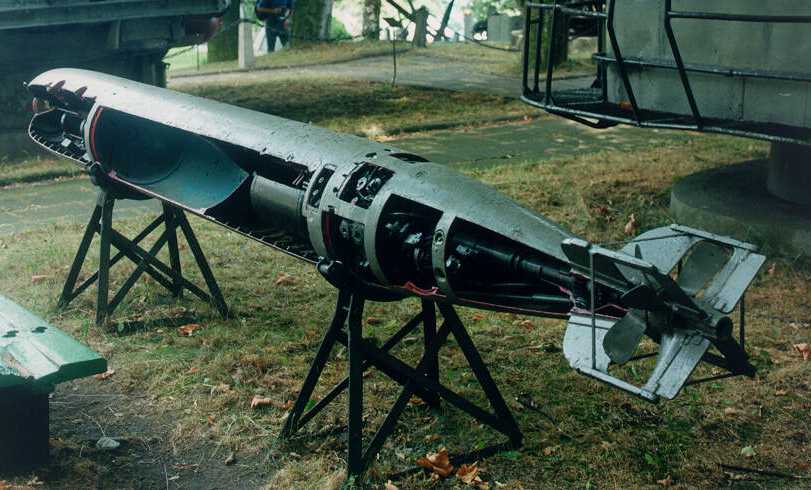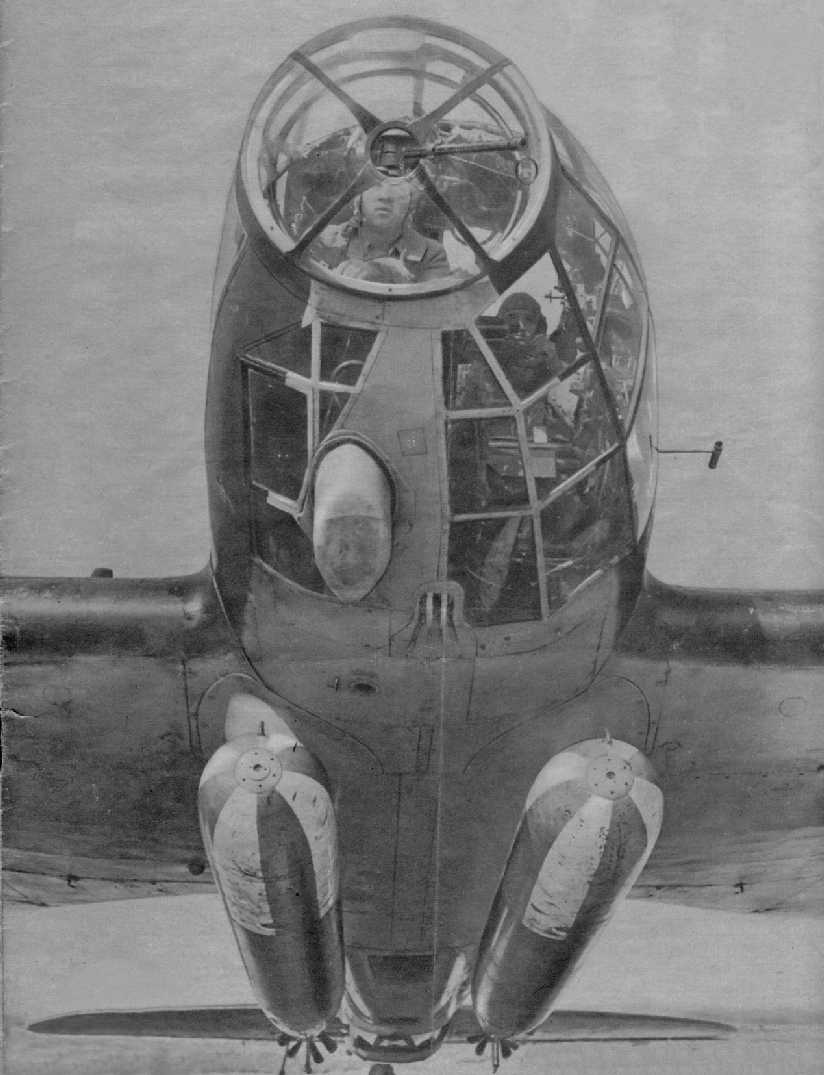| Ship Class Used On | Surface ships and Submarines |
|---|---|
| Date Of Design | 1934 |
| Date In Service | 1935 |
| Weight | 3,369 lbs. (1,528 kg) |
| Overall Length | 23 ft. 7 in. (7.186 m) |
| Negative Buoyancy | 605 lbs. (274 kg) |
| Explosive Charge (see text) |
617 lbs. (280 kg) Hexanite |
| Range / Speed | 6,560 yards (6,000 m) / 44 knots
8,750 yards (8,000 m) / 40 knots 15,300 yards (14,000 m) / 30 knots |
| Power | Decahydronaphthalene (Decalin) Wet-Heater |
Also known as "Ato," this torpedo was issued throughout the war and was considered to be very reliable. It was developed almost directly from the 50 cm (20") G7 of World War I and differed from those of other nations by using Decalin (decahydronaphthalene) instead of kerosene for fuel. Producing this torpedo took about 3,730 man hours per torpedo in 1939 but this fell to 1,707 hours by 1943. This was significantly more than what it took to produce the electric G7e.
The 44 knot speed was found to overload the engine and was not used during the early years of the war. The early models used in 1939 had ranges about 20% less than those given above. Used a four-cylinder radial engine that drove a single six-bladed propeller.
The Federapparattorpedo (spring-operated torpedo) or FAT variation had a simple guidance system that allowed a series of long or short legs or loops at the end of a configurable length of straight course.
Starting about mid-1944, the Lagenunabhängiger Torpedo (LUT) variation was introduced which was a more sophisticated version of FAT. LUT could be fired at any target angle and could follow a curved path to its target. LUT had problems with the targeting gear not disengaging at launch, resulting in "tube runners" and appears to have been rarely used after December 1944.
A Note on Sources: Warhead weight for these torpedoes conflicts in many references. I have seen numbers as low as 617 lbs. (280 kg) and as high as 948 lbs. (430 kg). It is possible that the lower numbers were for torpedoes issued early in the war and then heavier warheads were introduced during the war. However, I believe that the correct warhead weight was 617 lbs. (280 kg) as shown in the table.
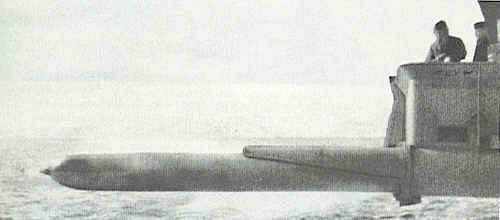
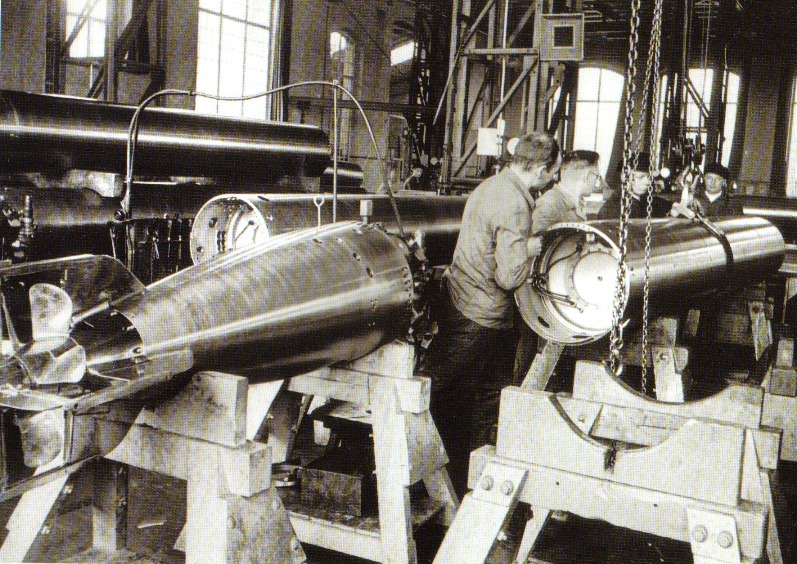
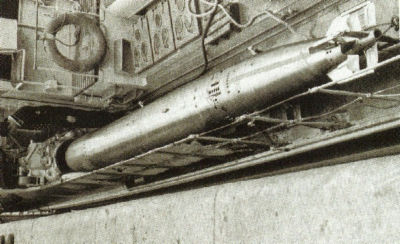
| Ship Class Used On | Submarines and Schnellbootes (E-boats) |
|---|---|
| Date Of Design | 1936 |
| Date In Service | 1936 |
| Weight | 3,534 lbs. (1,603 kg) |
| Overall Length | 23 ft. 7 in. (7.186 m) |
| Negative Buoyancy | 597 lbs. (271 kg) |
| Explosive Charge (see text) | 617 lbs. (280 kg) Hexanite |
| Range / Speed | Early War: 5,470 yards (5,000 m) / 30 knots
Late War: 8,200 yards (7,500 m) / 30 knots |
| Power | Lead-acid batteries |
Also known as "Eto," this unit used a 8-pole, 110 Vdc electric motor developing 100hp that drove a pair of contra-rotating two-bladed propellers. The above range and speed could be reached only if the batteries were preheated to 30 degrees Celsius. These torpedoes had to be serviced every three to five days in order to maintain their reliability. Slower than the wet-heater G7a type, but trackless and relatively quiet. It took about 1,255 man hours to produce each torpedo.
Each torpedo held 60 two-volt batteries coupled in series. Total Battery voltage was 124 Vdc immediately after charging and this decreased to 115 volts two days later. The voltage dropped to 104-106 Vdc during the run.
A Note on Sources: Warhead weight for these torpedoes conflicts in many references. I have seen numbers as low as 617 lbs. (280 kg) and as high as 948 lbs. (430 kg). It is possible that the lower numbers were for torpedoes issued early in the war and then heavier warheads were introduced during the war. However, I believe that the correct warhead weight was 617 lbs. (280 kg) as shown in the table.
- T2
-
This version had two batteries, each having 26 cells and rated at 93 amp hours in total.
- T3
-
Same as T2 but with an influence fuze.
- T3a
-
Same as T2 but with a larger battery capacity of 125 amp hours.
- T3b
-
The propulsive part of the Marder Submarine. Max speed of 2.5 knots.
- T3c
-
T3c was the torpedo for the Marder Submarine. The forward battery was eliminated and buoyancy was neutral.
Weight 2,937 lbs. (1,332 kg) Range / Speed 4,370 yards (4,000 m) / 18.5 knots
- T3d Dackel
-
A very long range / slow speed version intended for use in harbors or restricted bays. Could be programmed with specific circling or legs at the end of a straight run. Negative buoyancy was almost zero because of the very low speed. About 300 were adapted and issued starting in July 1944. About 80 or 90 were actually fired, most against shipping in the Seine Bay.
Length 36 feet (11 m) Weight 4,885 lbs. (2,216 kg) Range / Speed 62,300 yards (57,000 m) / 9 knots Explosive Charge 620 lbs. (281 kg) - T3e Kreuzotter
-
Another Midget Submarine Torpedo.
Weight 2,961 lbs. (1,343 kg) Range / Speed 8,200 yards (7,500 m) / 20 knots
| Ship Class Used On | Submarines |
|---|---|
| Date Of Design | about 1940 |
| Date In Service | 1943 |
| Weight | T4: 3,080 lbs. (1,937 kg)
T5, T5a and T5b: N/A T10: 3,571 lbs. (1,620 kg) T11: N/A |
| Overall Length | 23 ft. 7 in. (7.186 m) |
| Explosive Charge | 440 lbs. (200 kg) Hexanite |
| Range / Speed | T4: 8,200 yards (7,500 m) / 20 knots
T5: 6,230 yards (5,700 m) / 24-25 knots T5a and T5b: 8,750 yards (8,000 m) / 22 knots T10: 5,470 yards (5,000 m) / 30 knots T11: 6,230 yards (5,700 m) / 24-25 knots |
| Power | Lead-acid batteries |
Many records on these torpedoes were lost when the Gotenhafen experimental station was demolished to prevent capture by the Soviet Union. Serious experiments on homing torpedoes began in 1936.
- T4 Falke
-
The first passive homer. Homing was by a simple noise measurement. Intended for use against merchant ships so the low speed was acceptable. Originally known as G7eS, with the S signifying Sonderartsführung (special manner of behavior).
- T5 Zaunkönig 1 (wren)
-
Known as GNAT to the British. For use against convoy escorts. Designed to home in on cavitation noise of around 24.5 kHz which was equivalent to propellers on an escort traveling at 10 to 18 knots. First successful combat use in September 1943.
- T5a
-
A modified T5 used by S-boots (E-boats).
- T5b
-
Same range as T5a but used by submarines.
- T10 Spinne
-
A standard torpedo modified to use wire guidance. First issued in 1944 but the results were not satisfactory.
- T11 Zaunkönig 2
-
Improved T5 less influenced by Foxer (towed noise maker).
| Ship Class Used On | Aircraft |
|---|---|
| Date Of Design | 1935 |
| Date In Service | 1939 |
| Weight | 1,625 lbs. (737 kg) |
| Overall Length | 15 ft 9 in (4.804 m) |
| Explosive Charge | 441 lbs. (200 kg) Hexanite |
| Range / Speed | 2,200 yards (2,000 m) / 33 knots |
| Power | Decahydronaphthalene (Decalin) Wet-Heater |
The F5 was a low-performance Norwegian Torpedo developed by Schwarzkopf. Dropping speed was 75 knots from 50 - 80 feet (15 to 25 m).
| Ship Class Used On | Aircraft |
|---|---|
| Date Of Design | 1935 |
| Date In Service | 1941 |
| Weight | 1,598 - 1,790 lbs. (725 - 812 kg) |
| Overall Length | 15 ft 9 in - 16 ft 11.5 in (4.804 -5.160 m) |
| Explosive Charge | 397 - 551 lbs. (180 - 250 kg) Hexanite |
| Range / Speed | 2,200 yards (2,000 m) / 40 knots
6,560 yards (6,000 m) / 24 knots |
| Power | Decahydronaphthalene (Decalin) Wet-Heater |
The F5b was in service from late 1941 to the end of the war with relatively minor changes. To control flight in the air a wooden K3 tail was used that broke off when entering the water. This was replaced in 1944 with L2 which was similar but had ailerons operated via a heavy gyro. The L2 tail permitted increased dropping speeds and heights, the maximums actually achieved were 183 knots and 390 feet (120 m). The differences in weights and lengths in the table above are due to the different warheads.
This was the German designation of the Italian Fiume torpedo "W" and was used in large quantities before the 5b was available.
"Schlachtschiff Tirpitz" by Jochen Brennecke
"Naval Weapons of World War Two" by John Campbell
"S-Boote: German E-boats in action 1939 - 1945" by Jean-Philippe Dallies-Labourdette
"Black May" by Michael Gannon
"Una nueva visión del hundimiento del submarino C 3" [A new vision of the sinking of Submarine C 3] by Jose Luis Martín
---
"German Torpedo Bombers?
What Were they?" forum topic from WW2inColor.
30 May 2008 - Benchmark
07 January 2012 - Added G7a pictures
22 January 2012 - Altered note about G7a and G7e explosive charges
05 October 2019 - Converted to HTML 5 format
24 December 2022 - Added details on G7a and G7e torpedoes, added source and two "Note on Sources"

